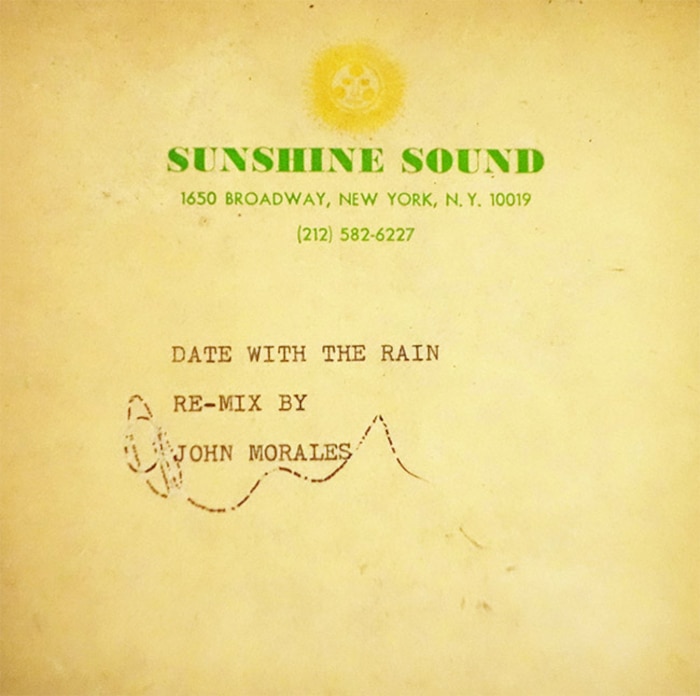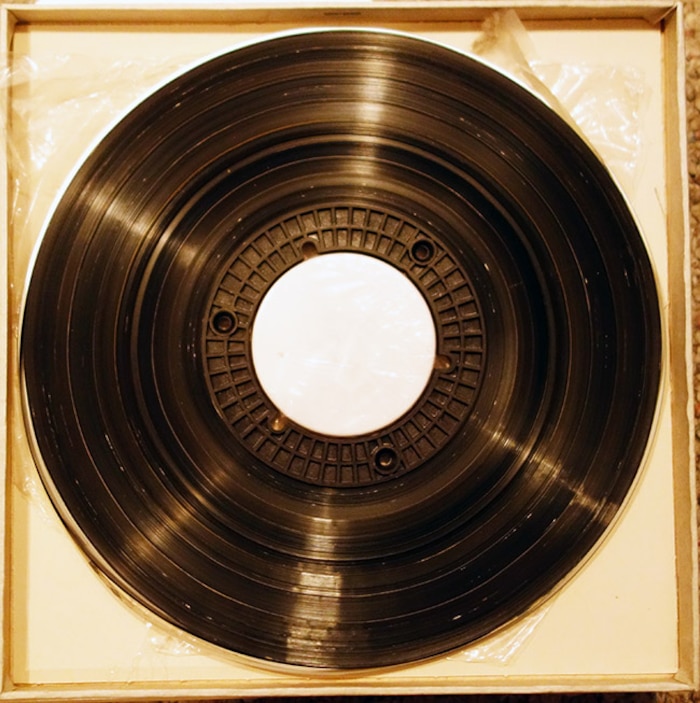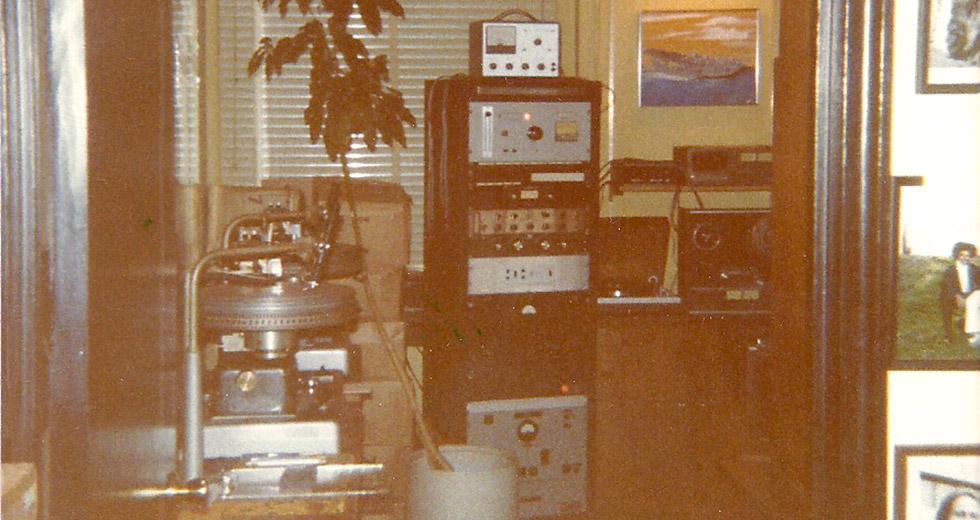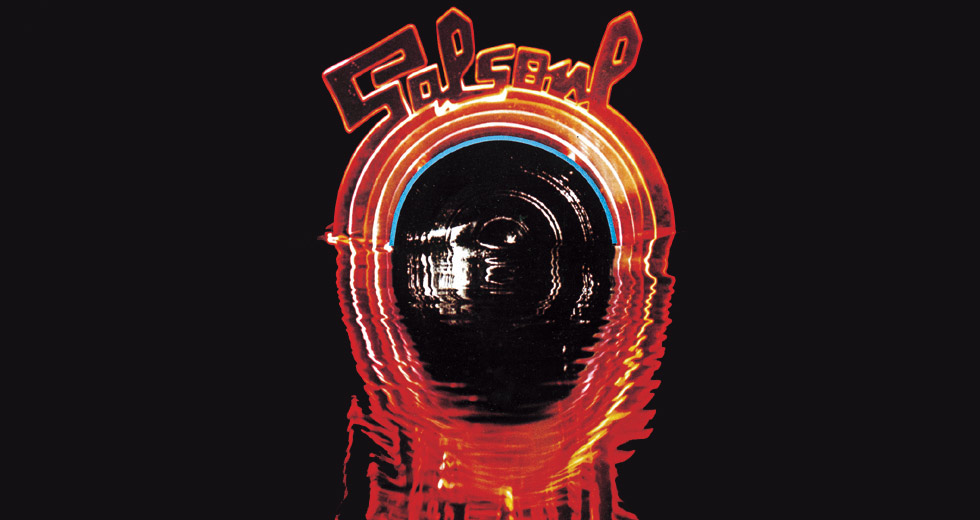Sunshine Sound: The Birthplace of the Remix
The untold story behind the unassuming New York office that birthed the remix.

We take remixes for granted nowadays, but back in the ’70’s a small group of DJ’s were creating the form from scratch. Sunshine Sound was its birthplace: The specially extended versions and bootlegs that emerged on this ultra obscure imprint are artifacts that show the evolution of the remix and DJ culture itself.
Sunshine Sound was owned by Frank Trimarco, a jobbing New York mastering engineer. He hired a tiny, bathroom sized office on 1650 Broadway, a building that was filled with record labels and industry players. Producers Greg Carmichael and Patrick Adams, Randy Muller from Brass Construction and Midsong International – a label home to Carol Douglas and a young John Travolta – all operated out of the building. Salsoul, arguably the most important disco label of the era, was situated only a few blocks away. The plan was simple: With so many musicians nearby, some were sure to need a mastering engineer.
It’s hard to say if John Morales’ mix of “Date with the Rain” was the first DIY mix pressed to record. However, it’s certainly one of the first examples of a disco DJ making records, instead of merely just playing them.
One of the services Frank offered was acetate pressing. Acetates are heavy, lacquered discs that can be played on a record player. They wear out after a few plays and are typically made as one-offs. Many labels used Frank for this service: after all, back in the mid ’70s, there were few other ways of showcasing a newly recorded song. Frank soon found an entirely new type of customer, however: As DJ culture evolved in New York, Sunshine Sound began cutting music for bedroom producers, and his unassuming office became the epicenter of an entirely new and little understood sub-culture.
Many know the story of Tom Moulton, who originated the extended disco remix. But Tom wasn’t the only person frustrated by the short length of most dance singles in the’70s. Some, like the ground-breaking hip hop DJ Kool Herc, worked out how to extend records by mixing between two copies. Others began to experiment with home recording set-ups in order to achieve the same result. One of these latter DJs was John Morales, then a teenage disc jockey working out of his father’s New Jersey bar. In 1974 John began experimenting with a cassette recorder to try and elongate Eddie Kendrick’s “Date with the Rain.” As John tells it, “It was a great record but only two minutes and 32 seconds long. I mean, it finished before it played. I always thought, ‘God, I wish I could make this longer.’ How I came about doing I’ll never know, but I got a cassette player and I somehow figured out how to hit the pause button just right so I could start recording something else and I made this five-and-a-half minute version. That inspired me to take other short records and try to figure out what I could do.”

There was only one problem: the clubs John worked in didn’t have a tape player. A flick through the local New York phone book led him to Sunshine Sound in Manhattan, where he could get his music pressed to acetate. It’s hard to say if John’s mix of “Date with the Rain” was the first DIY mix pressed to record. However, it’s certainly one of the first examples of a disco DJ making records, instead of merely just playing them. John’s early mixes may have been basic, but in their own small way they were revolutionary.
Another early remix pioneer who came through Sunshine Sound was François Kevorkian. François had arrived from France as a wide-eyed and enthusiastic musician searching for a break in The Big Apple. He landed a gig playing drums in Galaxy 21 while DJ Walter Gibbons spun a unique and uncompromising form of percussion-heavy disco. Walter’s mixing talent was off the charts. He could not only blend seamlessly, a remarkable skill considering the basic DJ equipment of the era, but he could also cut between records as well as any of the early hip hop DJs. Gibbons’ calling card was his knack for blending and cutting drum parts until the music was an abstract, percussive wall of sound. One of Walter’s trademarks was the way he’d loop two copies of the conga break in Rare Earth’s “Happy Song,” a segment little more than 30 seconds long. This kind of mix was incredibly hard to accomplish live, so Francois aimed to imitate the inimitable by recreating Walter’s mixing style using a reel-to-reel. The results were an amazing raw proto-house track that’s hard to believe was made in the mid ’70’s.
Most of the early remixes that came out of Sunshine Sound were simply functional. However, there were a few – like “Happy Song” – that didn’t just extend records but totally re-contextualized them. These were some of the earliest examples of the remix as a creative medium. François K’s mix of Jermaine Jackson’s “Erucu” is just one that showcases a pioneering cut and paste aesthetic. The track was again inspired by a Walter Gibbons trademark mix, but François then added a series of extra breaks and beats to the already heady percussive blend: Love Unlimited Orchestra, Larry Page, People’s Choice, and Ashford & Simpson all can be heard. There’s even a sample of The Trashmen’s novelty hit, “Surfing Bird” at the end. Likewise, many of John Morales’ early mixes display how quickly his tape editing skills were improving. Listen to his take on Dan Hartman’s “Instant Replay,” and you’ll hear his obvious talent at cutting and splicing reel-to-reel tape.
Even the best selling remixes barely sold 100 copies. But as niche as Sunshine Sound’s pressing business was, it was still influential.
Even some of the remixes that used basic techniques achieved remarkable results. Warren Gluck’s mix of “I Will Survive,” pressed at Sunshine Sound in 1978, was made using two turntables and a tape deck. The track doubles up two copies of Gloria Gaynor’s classic over a looped drum beat, perfectly exhibiting some of the next level DJ skills that were commonplace in the early disco scene. Surfacing three years before Grandmaster Flash’s “Adventures on the Wheels of Steel” first showcased turntablism on wax; Gluck’s mix is one of the very first records where the DJ is the star performer.
A turning point in the history of Sunshine Sound came when Frank Trimarco made some of the early edits more widely available. Understandably, some of the remixes Frank pressed gained something of a cult following. A deal was struck to sell edits in a few specialist record stores. For every acetate sold, the remixer would get $1. (The original artists were never acknowledged or paid.) It was an under-the-counter and small-scale operation. Frank could never mass-produce acetates, as they had to be cut in real time. Even the best selling remixes barely sold 100 copies. But as niche as Sunshine Sound’s pressing business was, it was still influential. These were, in effect, the first white label dance remixes in record stores: work made by DJs for DJs.

Eventually, major record labels began to pay attention to Sunshine Sound mixes. Not all of it was welcome. John remembers getting an angry phone call from Prelude Records when they discovered he’d remixed Musique’s “In the Bush” without their permission. But often the awareness was positive. A big break for John came when Greg Carmichael and Patrick Adams got talking to Frank Trimarco in the Sunshine Sound offices. Greg and Patrick were looking for a mixer to help with their latest project. Frank recommended Morales, who was then asked to work on Inner Life’s “Caught Up In A One Night Love Affair,” a record that featured a young Jocelyn Brown on vocals. This was John’s first experience recording in a real studio outside of his home set-up but the results were simply sensational. John continued to work with Patrick and Greg through the early ‘80’s and subsequently became one of the most in-demand remixers in the music business, eventually remixing everyone from Leroy Burgess to the Rolling Stones.
By the late ‘70’s record labels were commissioning more and more DJ remixes. During this time, Sunshine Sound continued to be a vital part of remix culture. Walter Gibbons, who’d previously had his own acetate pressing business, Melting Pot, began to get his personal remixes pressed at Sunshine. Perhaps the best was Walter’s mix of Gladys Knight’s “Better Than Good Time”: a record that’s still talked about as one of the most elusive disco remixes ever. The 12 minute version is significantly different – and significantly better – than the six minute version that was officially released.
For many of New York’s best DJ’s, Sunshine Sound acetates became a vital part of their arsenal. Kenny Carpenter, Nicky Siano, and Tom Moulton all played them. Larry Levan was an especially big fan and Sunshine edits, such as Bobby Busnach’s mix of “Girl You Need A Change Of Mind,” became Paradise Garage anthems.
“If you buy a Sunshine Sound, and you don’t know anything about it, the chances are it isn’t good. Only 10% are any good and the rest is history and nice to have.”
One man who knows more than anyone about the impact of Sunshine Sound is Patrick Lejeune, AKA Disco Patrick. Patrick is the authority on disco bootlegs and owns the largest collection of Sunshine Sound acetates in the world – around 400+ at his last count. He’s also written a book on the subject, The Bootleg Guide To Disco Acetates, Funk Rap and Disco Medleys. As he tells it, “a lot of Sunshine Sound acetates are one of a kind. I’ve found about 600 titles, but there could easily be more. If you buy a Sunshine Sound, and you don’t know anything about it, the chances are it isn’t good. Only 10% are any good and the rest is history and nice to have. There were a lot of other mixes from local DJs that were very primitive, the cut and paste isn’t good. They’re home-made recordings.”
The fact anyone could press records at Sunshine Sound explains why only a few Sunshine Sound acetates contain great music. Even so, after nearly 40 years, most Sunshine Sound acetates barely play back thanks to the temporary nature of acetate records. None of this has dulled Patrick’s enthusiasm, however. When I ask him his favorite releases on the label he references the Gibbons’ mix of “A Better Than Good Time,” an acetate he saw go for $1,000 on eBay ten years ago, and a raw, stripped down version of Candido’s “Thousand Finger Man” that was never officially released.

As the ’70s turned to the ’80s, the fortunes of the disco industry took a sharp turn for the worse. The “Disco Sucks” movement, a campaign that ostensibly celebrated rock aesthetics but slyly attacked the gay and black elements of disco, took hold of American mainstream culture. Many disco labels struggled, and before long most had either shut down or moved from their grand, downtown New York offices. Sunshine Sound became a casualty of the disco downturn, shutting up shop sometime in the early ’80s.
Unfortunately little is known about Frank Trimarco’s next moves. His name pops up as a mastering engineer for releases on New York house label Quark in 1989, but after that there’s no record of him. Many accounts state that, sadly, Frank passed away sometime in the early ’90s. However, it’s clear that Sunshine Sound has had an enduring, if oblique, influence over dance music. The records that came from this lowly, New York office had a monumental effect on a golden age of NYC nightlife. The ideas and ethos first crystallized on the Sunshine Sound remixes have become mainstays in every remix since and likely forevermore.

